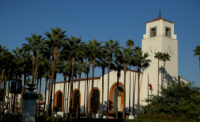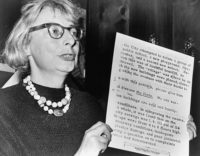Opera doesn’t enjoy the kind of broad popular appeal it did 50-odd years ago when New York’s Metropolitan Opera opened its new house in Lincoln Center. But even if you don’t know the difference between Rigoletto and rigatoni, make time for The Opera House.
Susan Froemke’s 110-minute documentary, which premiered on May 28 as part of PBS’ long-running Great Performances series and is now available for streaming, is framed around the development of the Met’s current home, open since September 16, 1966: Lincoln Center for the Performing Arts. For more than 80 years prior, the Met operated from a theater at 1411 Broadway, which was razed in 1967 and replaced with a 40-story office tower. Using interviews with longtime Met employees and performers—including soprano Leontyne Price, who opened the new Met in 1966 and is still incandescent in her early 90s—and exceptional archival photography and footage from inside the original Met house, Froemke potently recreates the one-time focal point of New York’s social set and working classes alike, then takes us to the nerve-wracking opening night of the current Met. It’s a rousing argument for opera.
But more than just a call to support your local soprano, The Opera House is an incisive discussion of postwar urbanism, of which the Met was the centerpiece for the Lincoln Center complex. The overall project was overseen by Wallace K. Harrison (who also designed the new house) and includes buildings from a who’s who of modernist royalty: Philip Johnson (David H. Koch Theater), Max Abramowitz (David Geffen Hall), Pietro Belluschi (Juilliard School/Alice Tully Hall), Eero Saarinen (Vivian Beaumont Theater), and Gordon Bunshaft of Skidmore, Owings & Merrill (New York Public Library for the Performing Arts). To say it was a difficult life for Harrison is a wild understatement. Froemke does a fine job conveying his struggle to not only corral a group of huge egos but also realizing his fantastical dreams for the Met: he went through 44 models, and his early designs are equal parts Fritz Lang and Le Corbusier. His final building is a compromise wrought by budget contractions—“There was a part of him that always felt he had sold a little bit of his soul,” critic Paul Goldberger says in the film—but its towering arches and avant-garde chandeliers are still appealing and the acoustics inside exceptional.
Thanks in no small part to Harrison’s Met, Lincoln Center is now a stop on the New York tourist trail. But before it was the city’s Acropolis, the 45-acre site was a bustling neighborhood of European immigrants and their kids. (It was the setting for the musical West Side Story.) When Robert Moses condemned the area in his lust for slum clearance, he provided the Met with a long-sought location for a new house and gave the city an arts hub. He also displaced countless individuals, families, and businesses.
This is a part of the Lincoln Center story that too often feels missing, but Froemke embraces it fully. She recreates the neighborhood using fantastic archival footage and interviews with former residents, which revive the neighborhood and provide testimony to the human damage Moses—and the project—caused. She also weaves in a kind of ironic commentary by including a promo film declaring Lincoln Center was the “creation of the American people...built by their own free will” and video of Leonard Bernstein conducting the New York Philharmonic as it performs Aaron Copland’s Fanfare for the Common Man.
That said, The Opera House is hardly a take down. Instead, it’s a lively celebration of opera and a commemoration of the mighty forces that mobilized to find the Met a new home. It does feels cautionary, though, posing difficult questions about our urban landscape without offering easy answers. Nearly six decades later, as communities around the country face similar issues of land use and housing that haunted the Met and Lincoln Center, there could be no better time for the conversation.















Post a comment to this article
Report Abusive Comment